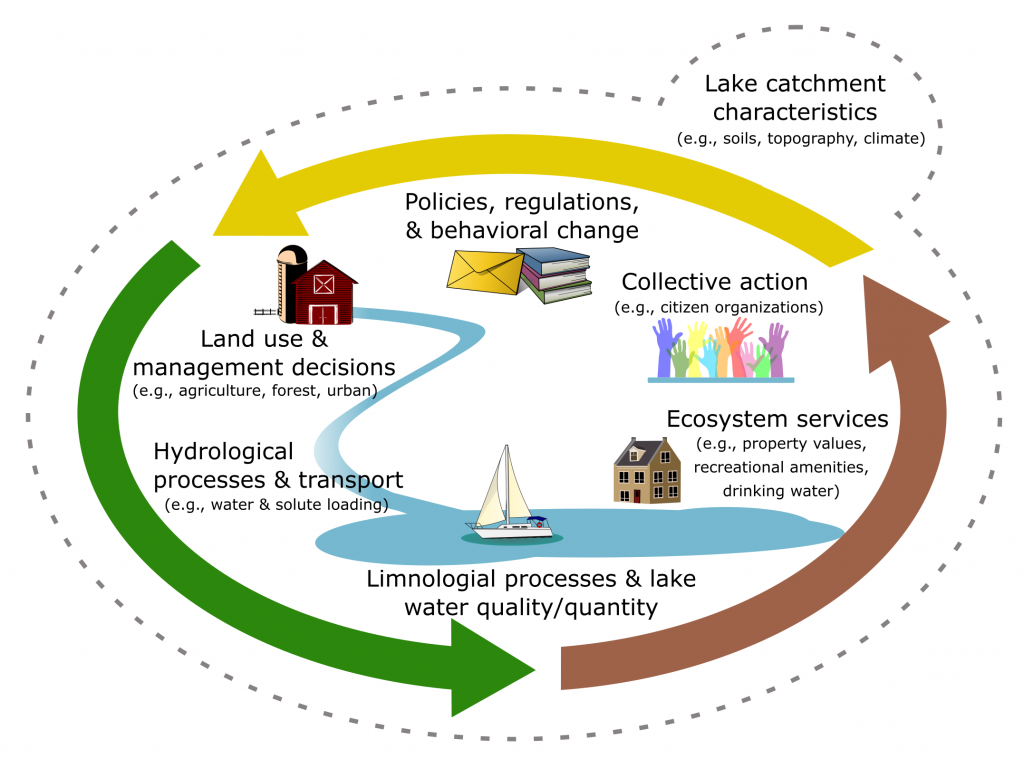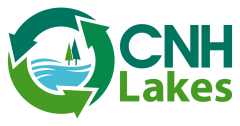
As this diagram suggests, the connection between people and lakes is like a big feedback loop, with people and lakes constantly interacting with each other, and changing over time. This is what makes it a coupled natural and human system.
We can divide this feedback loop into three general sections: the effects people have on lakes (green arrow), the effects lakes have on people (brown arrow), and people’s responses to change (yellow arrow).
The CNH Lakes project asks specific research questions about each of these sections, and all the transitions in between. This is why we need such a large and multi-disciplinary team.
Research Questions
Below are some of the research questions we are working to answer. Although the answers may not be the same for all lakes everywhere, we hope to draw some conclusions that are helpful in a variety of places.
- In a given set of circumstances, what decisions will farmers make when it comes to planting crops and applying fertilizer?
- Once fertilizers and other substances (like nutrients) enter the soil, how do they get transported to streams and lakes?
- When those substances are deposited into lakes, how do they affect the physical and biological processes going on there? What is the effect on water quality?
- As water quality in a lake changes (for instance, if the water becomes cloudier, or more algae grows), what happens to the value of nearby properties? How do the prices of homes change?
- How do people respond to these changes in water quality, and the changes in property values? When citizens join together to form lake associations, how do they decide what their missions are?
- What can happen when these lake associations are able to change the way people use and manage land?
Methods
So how does the team answer these questions? By using computer models, and by analyzing data from our study lakes. Within our project, we have individual modeling teams that work to answer each research question, and they pass their results on to other team members, who use those results to help answer other questions.
For More Information
If you are a researcher (or any interested individual) curious about the details of our research, please see our Publications page. We will continue publishing papers about the project as we go, including an upcoming article describing the conceptual and practical framework for this project.
